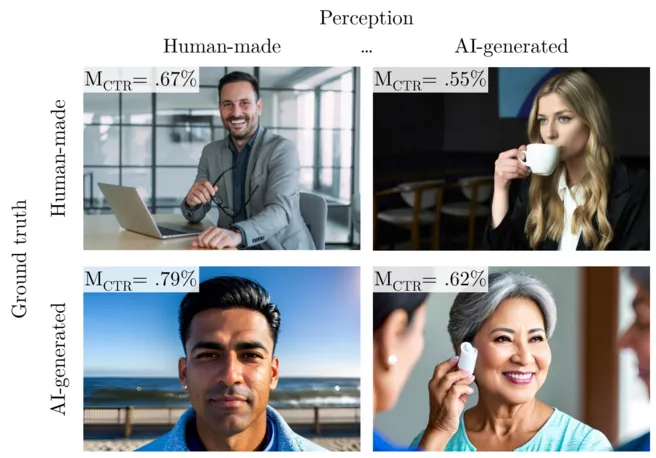Study Overview
Researchers from Technical University of Munich, Columbia Business School, and Harvard Business School analyzed over 16 billion ad impressions across 7,000 advertisers to understand how AI-generated display ads perform in the real world. The study examined ads created using an AI tool called GenAI Ad Maker, comparing them against traditional human-made ads.
Key Findings
The research reveals that AI-generated ads can match or exceed human-made ads' performance, but with an important caveat: they perform best when they don't look AI-generated. AI ads that consumers perceive as human-made achieved significantly higher click-through rates than both human-created ads and AI-generated ads that looked artificial. Interestingly, consumers often struggled to identify AI-generated content - about 59% of AI-generated ads were perceived as potentially human-made. The study found that certain visual features, like vivid colors, signal "AI-made" to consumers. However, AI excels at creating highly aesthetic images with prominent faces - features that consumers typically associate with human creation.
Implications for Marketing
These findings have significant implications for the advertising industry. While AI can create ads much more efficiently than humans, success depends on making these ads appear natural and human-made. The research suggests that smaller advertisers benefit most from AI tools, potentially democratizing access to high-quality advertising content. The study also raises important questions about transparency in AI-generated advertising and how consumer perceptions of AI might evolve as the technology continues to advance. The researchers' analysis of newer AI models shows that while they're getting better at creating human-like content, the variation in perceived artificiality persists - suggesting these findings will remain relevant as AI technology evolves.
Link to working paper: https://papers.ssrn.com/sol3/papers.cfm?abstract_id=5096969
